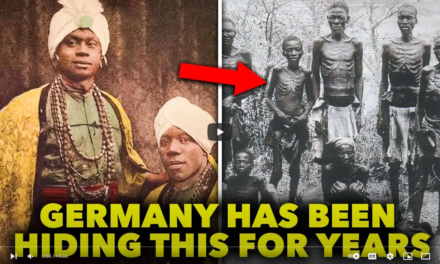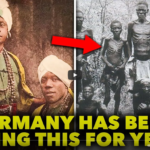Germany’s rich and complex history is often overshadowed by the dark era of the Nazis, a period marked by unimaginable atrocities against humanity. However, less known is the story of the black community in Germany, which, by the 1920s, numbered between 20,000 and 25,000 individuals. This diverse group, comprising immigrants, refugees, students, and multigenerational Afro-Germans, established vibrant communities in cities like Berlin and Hamburg. These enclaves served as cultural hubs and intellectual melting pots, thriving despite discrimination and marginalization.
A Flourishing Community Amidst Discrimination
Before the rise of the Nazis, black Germans created self-sustaining communities that preserved African traditions, art forms, and sociopolitical movements. These communities were seen as a testament to ethnic diversity and pluralism within German society. However, the Nazi regime, under Adolf Hitler’s fascist leadership, viewed this diversity as an existential threat. The hateful ideology of the Nazis, which glorified racial supremacy, led to the dehumanization and systematic destruction of Germany’s black population.
The Nazi Regime’s Assault on Afro-Germans
The Nazis’ campaign against the black community began with the Law for the Restoration of the Professional Civil Service in 1933, which led to the dismissal of non-Aryans, including Afro-Germans, from government jobs and influential positions. This was a devastating blow to the socioeconomic mobility and intellectual fabric of the black community. The Nuremberg Race Laws of 1935 further entrenched the regime’s racist doctrine, relentlessly targeting and persecuting black Germans.
The Reich Citizenship Law stripped Afro-Germans of their full citizenship rights, relegating them to second-class status. Vicious propaganda campaigns scapegoated black individuals as a corrupting influence, leading to their exclusion from housing, education, and civil jobs through racist segregation policies. The regime also outlawed interracial relationships and implemented forced sterilization programs to prevent the growth of the black population, aiming to erase their presence from society. Euthanasia programs targeted those deemed racial or mental defectives, resulting in the systematic killing of many Afro-Germans.
Acts of Resilience and Defiance
Despite facing relentless racist oppression, the Afro-German community exhibited resilience, bravery, and defiance. Figures like the famous boxer Johan Trollmann and journalist and author Hans Masoy became symbols of resistance. Their stories highlight the indomitable spirit of a community refusing to be erased from their homeland’s cultural fabric.
Learning from History
The brutal transformation of Germany from a democracy to a fascist regime serves as a stark reminder of the dangers of racial hatred and discrimination. The legalized bureaucratic campaign to disempower, dehumanize, and destroy minority communities in the name of racial purity underscores the importance of understanding this dark chapter of history. It’s a lesson against destructive ideologies and a call for eternal vigilance to defend human rights and dignity for all people.
Recognizing the resilience and fortitude of the oppressed community emphasizes the importance of our common humanity across all races and creeds. It’s a potent antidote to supremacist ideologies, reminding us of the strength found in diversity and the collective fight against oppression. This chapter of history, though painful, teaches us the value of resilience and the power of standing together in the face of adversity.


















